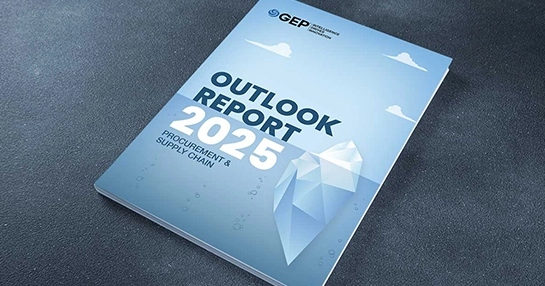
OPEC+ Shifts Strategy to Regain Market Share
- OPEC+ is moving from output restraint to volume recovery.
- Fiscal pressure and non-OPEC growth are forcing strategy changes.
- Shifting Asian demand and rising EV adoption redefine long-term oil outlook.
November 06, 2025 | Oil and Gas 3 minutes read
The global oil market has rarely been as unpredictable as it is today. Over the past 18 months, OPEC+ has made one of its most significant strategic pivots moving away from deep production cuts toward a campaign to regain market share. What began as a defensive move to stabilize prices has evolved into a calculated effort to protect long-term influence in a rapidly changing energy world.
Strategic Production Realignments Across OPEC+
Throughout 2024, OPEC+ maintained its record production cuts totaling around 5.85 million barrels per day (bpd). The reductions aimed to support oil prices in response to sluggish demand growth and rising output from non-OPEC producers. By mid-year, the group extended these curbs into 2025, reaffirming its commitment to market stability and production discipline.
But the longer the restraint lasted, the more strain it created.
Iraq, Kazakhstan, and Russia regularly produced above their targets by 1.184 million b/d, 480,000 b/d and 620,000 b/d respectively undermining group credibility.
Meanwhile, OPEC+’s share of global supply fell from 53% in 2016 to 47% by 2024, as new producers filled the gap. U.S. shale, Brazil’s offshore fields, and Guyana’s rapid expansion captured much of the growth that OPEC+ voluntarily gave up.
In December 2024, fiscal pressure forced a reassessment. The alliance delayed new output increases until April 2025 and announced a “gradual and flexible” unwinding of cuts adding roughly 138,000 bpd each month. The tone had shifted: price stability would now take a back seat to volume recovery.
Gradual Market Rebalancing and Policy Shifts
When production increases began in April 2025, Saudi Arabia led the push, a strategy to reclaim markets, especially from high-cost U.S. shale producers. The idea was to lift output just enough to pressure competitors while keeping oil within a manageable $55–$65 per barrel range.
By September 2025, OPEC+ had restored more than 2.2 million bpd, taking total production to 43.05 million bpd. Saudi Arabia’s output rose to 9.96 million bpd, and Russia despite expanding Western sanctions pushed to 9.32 million bpd.
U.S. policy moves in 2025 only added to the market’s volatility. In August, the Trump administration imposed a 50% tariff on Indian imports of Russian oil, aiming to curb Moscow’s export revenues. The plan quickly backfired. Russia countered with deeper discounts on Urals crude, making it even cheaper for India and China. India continued sourcing 37% of its oil from Russia, while China absorbed much of the surplus.
At the same time, Washington’s mixed messaging pressuring OPEC+ to increase production while promoting aggressive domestic drilling played directly into the alliance’s hands. By carefully managing output, OPEC+ kept pressure on U.S. producers without flooding the market.
Resilient Asian Demand and Market Rejuvenation
The bigger disruption came not from supply but from China’s demand dynamics. For the first time in decades, Chinese oil consumption fell down 1.2% to 8.1 million bpd. The accelerating adoption of electric vehicles now representing 41% of new car sales is structurally altering China’s fuel demand landscape.
Chinese oil companies have quietly revised their long-term forecasts, signaling that national demand may be nearing a plateau. This change has created a rare divide in global projections. OPEC still expects 1.3 million bpd of demand growth in 2025, while the International Energy Agency (IEA) foresees only 710,000 bpd a gap reflecting uncertainty over the pace of the energy transition.
Navigating the Next Phase of Market Stabilization
As of October 2025, OPEC+ continues modest production hikes of 137,000 bpd per month. Brent crude trades near $62 per barrel. The IEA now warns that the world could face a 4 million bpd surplus by 2026 if current expansion continues unchecked.
OPEC+ now must decide whether to keep defending market share or revert to price protection. Internal dynamics add another layer of complexity and overproduction, Russia’s resilience, and steady gains from Brazil and Guyana continue to test unity.
The coming months will be critical. If the alliance manages to strike a balance between volumes, compliance, and stability, it could reaffirm its position as the cornerstone of global oil markets. If not, it risks losing influence just as the energy transition gathers pace.
Author: Praveen Naidu
Sources:
- https://www.reuters.com/business/energy/opec-poised-raise-oil-output-further-sources-say-2025-10-05/#:~:text=The%20cuts%20were%20made%20up,by%20the%20end%20of%20September.
https://oilprice.com/Energy/Crude-Oil/Will-OPEC-Sit-Back-as-Non-OPEC-Oil-Gains-Ground.html
https://oilprice.com/Energy/Energy-General/Soaring-EV-Sales-Dent-Chinas-Oil-Demand-Growth.html



